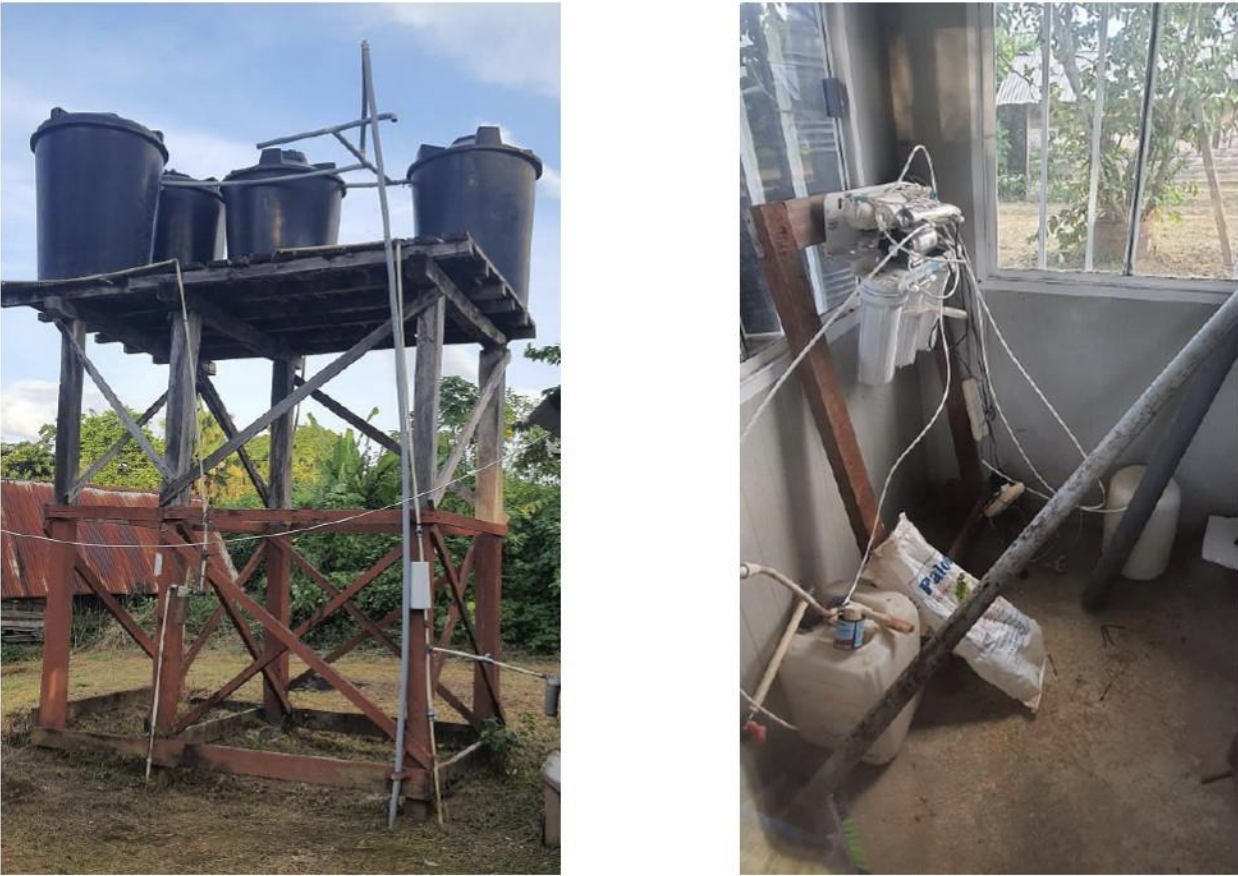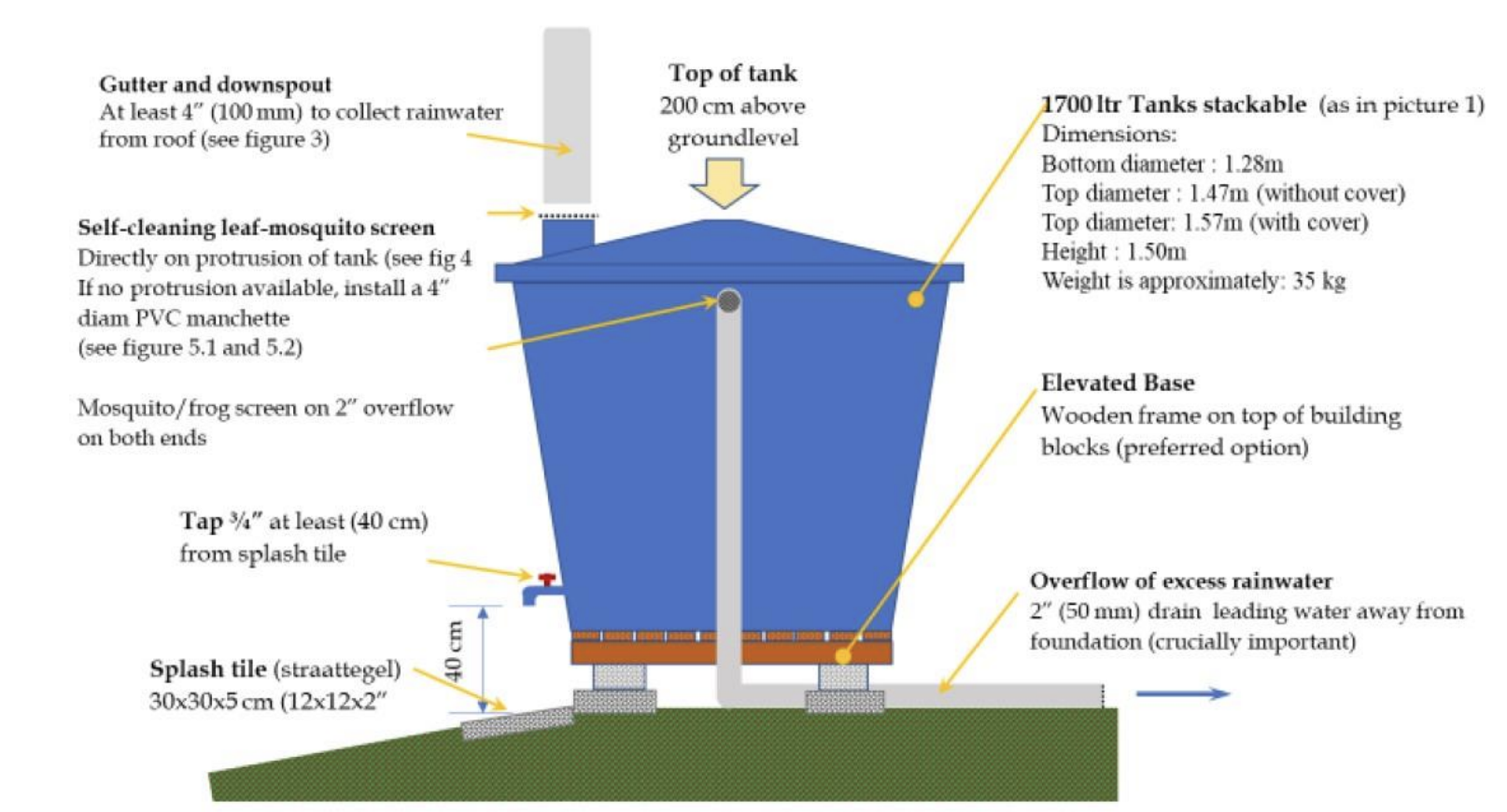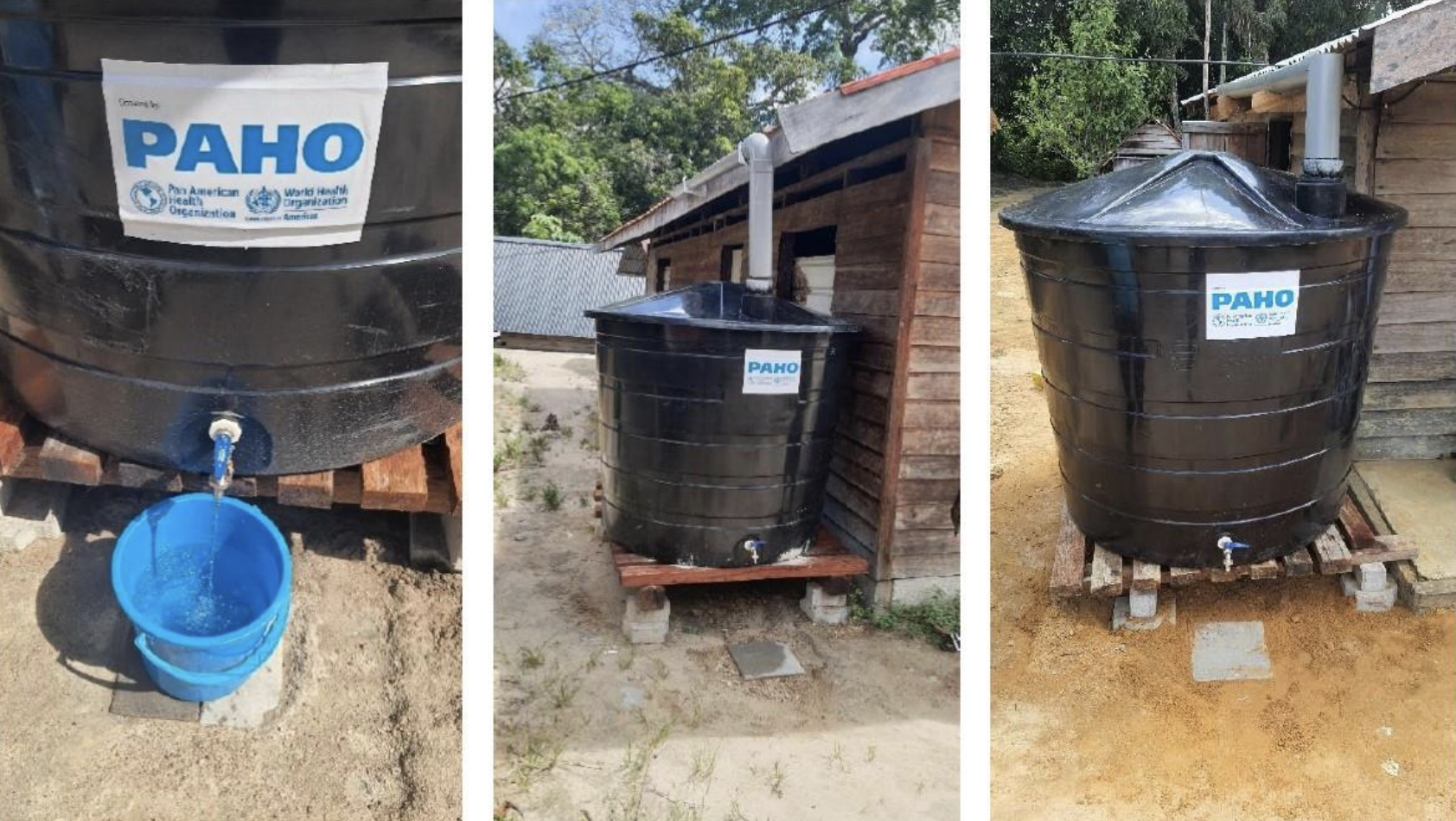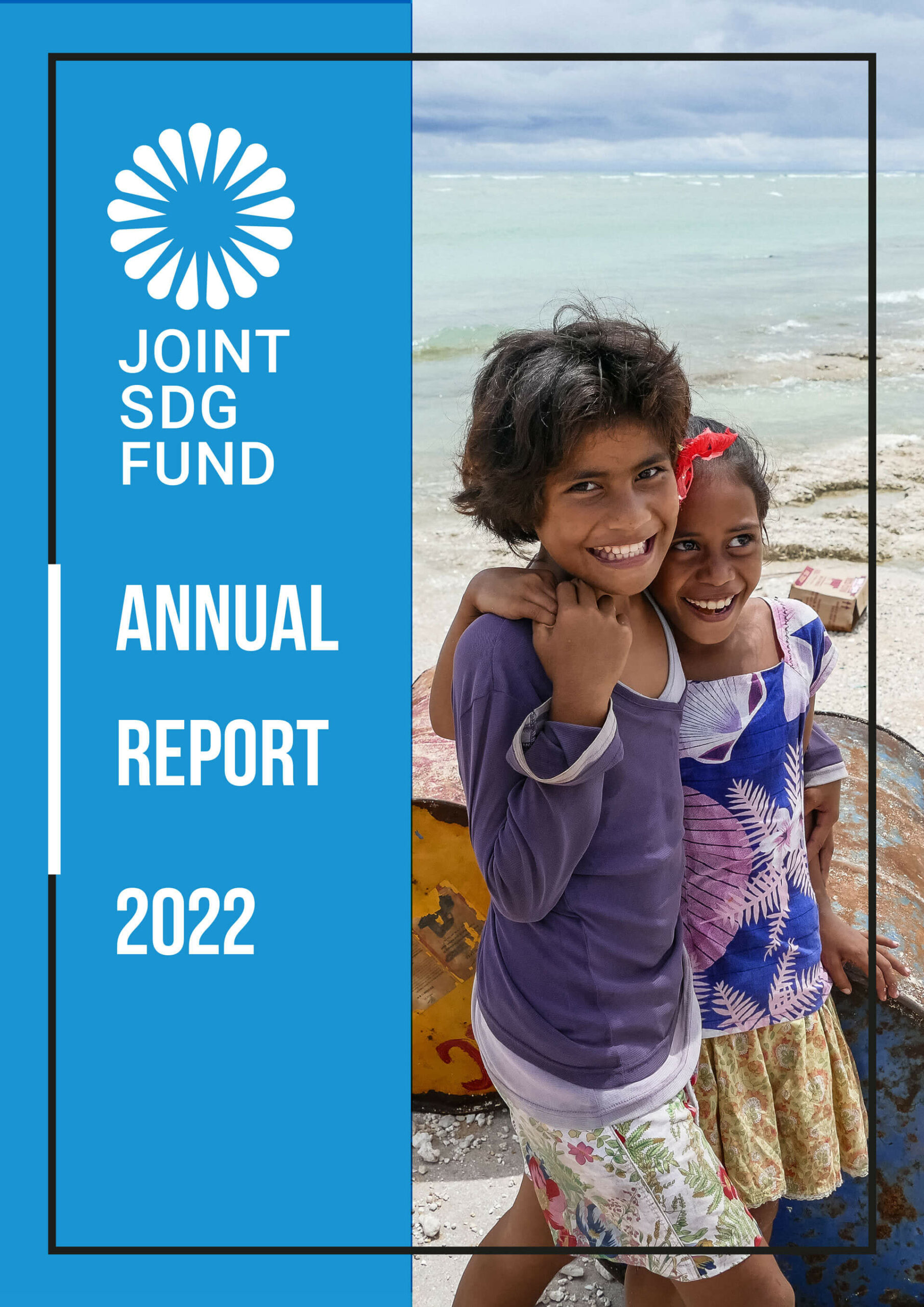One of the main objectives of the Joint Programme in Suriname is to strengthen sustainable systems for access to clean drinking water for vulnerable communities by utilising climate sensitive technologies. With the support of the village leaders and the assistance of Medical Mission, an NGO providing primary health care services in the interior, 55 communities were visited and an assessment of their drinking water supply systems was conducted.
Field observations of the 55 villages revealed there was only one operational drinking water supply system, a sand filter plant in Mooitaki, operated by public company N.V. Surinaamsche Waterleiding Maatschappij (SWM). Other water supply systems are either nonfunctional, leaking, or deliver untreated water to the community.

The communities indicated that rainwater is the preferred source of drinking water if treated drinking water is not available. Many people collect rainwater, either in small containers, drums and "Durotanks". People are very aware of the need to cover the tanks, and many protect their tanks by placing a sheet or a screen over the inflow opening. Communities and villages for the installation of the Rain Water Harvesting Tanks (RWHTs) were identified based on need and the locations and households in collaboration with the village leaders, Kapiteins and Bashas, and at village meetings.
The RWHTs system was designed and an instruction manual for maintenance and cleaning was developed. At all locations instructions were given to the beneficiaries, especially to the women on the cleanliness of the tank, its maintenance and regular cleaning.

Design of Rainwater System
A total of 118 rainwater harvesting tanks were installed in 57 villages along the Upper Suriname and Tapanahony rivers providing access to safe drinking water to 4,385 persons.

The impact on the villages of the rainwater harvesting tanks was immediate as in many villages, the rains which occurred shortly after installation were able to fill the tanks and residents were noted to be happily filling drinking water bottles and other small household containers for their drinking and cooking purposes. The residents also expressed their gratitude for the tanks and provision of adequate drinking water.



















